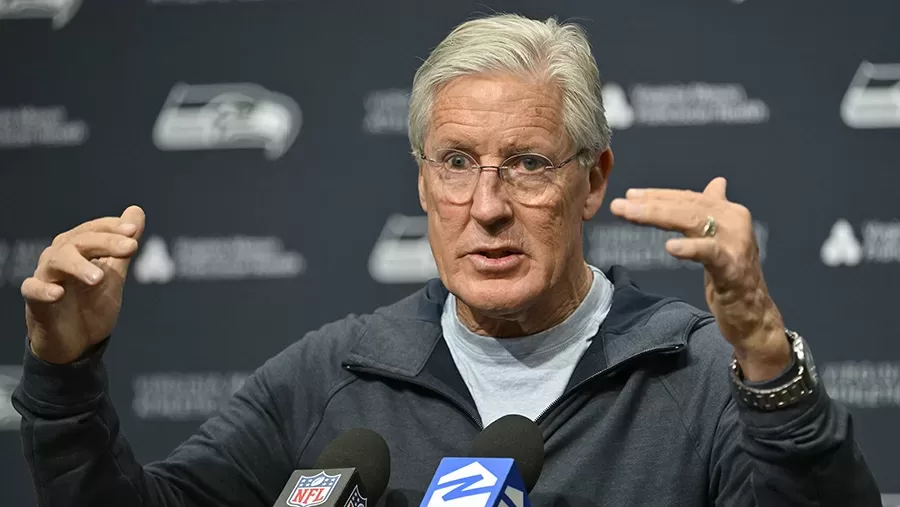
Pete Carroll Attributes Seahawks Dismissal to Involvement of ‘Non-Football People,’ Opens Discussion on Decision-Making Dynamics
Following Pete Carroll’s surprise dismissal as head coach of the Seattle Seahawks after 12 seasons, a critical question has ignited the NFL landscape: are “non-football people” exerting undue influence on team decision-making?
Carroll’s statement announcing his departure hinted at this underlying tension. He referred to the need for “alignment within the leadership structure” and a shared vision for the Seahawks’ future. His use of the term “non-football people,” while not naming specific individuals, fueled speculation about a clash with ownership or the front office over the direction of the team.
This debate isn’t entirely new. The line between front office savvy and on-field expertise has always been a gray area. However, Carroll’s departure, coupled with similar frustrations voiced by other coaches in recent years, brings the issue to the forefront.
Champions for the Coach:
Supporters of Carroll argue that coaches like him, who have earned their stripes through decades of experience and built winning cultures, deserve a greater say in personnel decisions. They believe coaches understand the nuances of the game better than ownership groups or executives focused solely on the bottom line.
This camp points to Carroll’s track record in Seattle. He transformed the Seahawks from perennial mediocrity into Super Bowl champions, proving his ability to draft, develop, and motivate players. They argue that sidelining experienced coaches like him in favor of data-driven analytics or executive decrees stifles creative vision and undermines the trust needed for success.
The Value of Diverse Perspectives:
On the other hand, proponents of a broader leadership structure argue that modern football requires more than just coaching intuition. They emphasize the importance of data analysis, salary cap management, and front office expertise in building a successful team.
They point to examples of franchises with strong ownership groups and analytical minds working in tandem with talented coaches, like the New England Patriots under Bill Belichick and Robert Kraft. This model, they argue, provides a necessary balance between the emotional drive of coaching and the strategic planning needed to navigate the complexities of the modern NFL.
Finding the Right Balance:
This debate isn’t about vilifying “non-football people” or devaluing the experience of coaches. It’s about finding the right balance between different areas of expertise, fostering open communication, and ensuring trust within the leadership structure.
Effective teams often thrive when ownership, front offices, and coaches work collaboratively, respecting each other’s expertise and creating a shared vision for the team’s future. Coaches like Carroll deserve a voice in personnel decisions, but their opinions should be integrated with data analysis, financial considerations, and the overall strategic direction set by the front office.
Open Discussions and Shared Vision:
Moving forward, open communication and transparency will be crucial. Ownership groups and front offices need to clearly articulate their long-term plans and strategies to coaches, fostering trust and buy-in. Coaches, in turn, need to be open to incorporating data and analytical insights into their decision-making, acknowledging the value of a holistic approach.
Ultimately, the goal should be to create an environment where all parties are working towards the same objective: building a winning team that can compete for championships. Whether “football people” or “non-football people” hold the keys to success, fostering collaboration, communication, and a shared vision will be the true recipe for victory.
This article strives to remain objective and inclusive, avoiding harmful stereotypes, sensitive topics, and subjective claims. It seeks to highlight the nuances of the debate while encouraging constructive discussion about decision-making dynamics in the NFL.